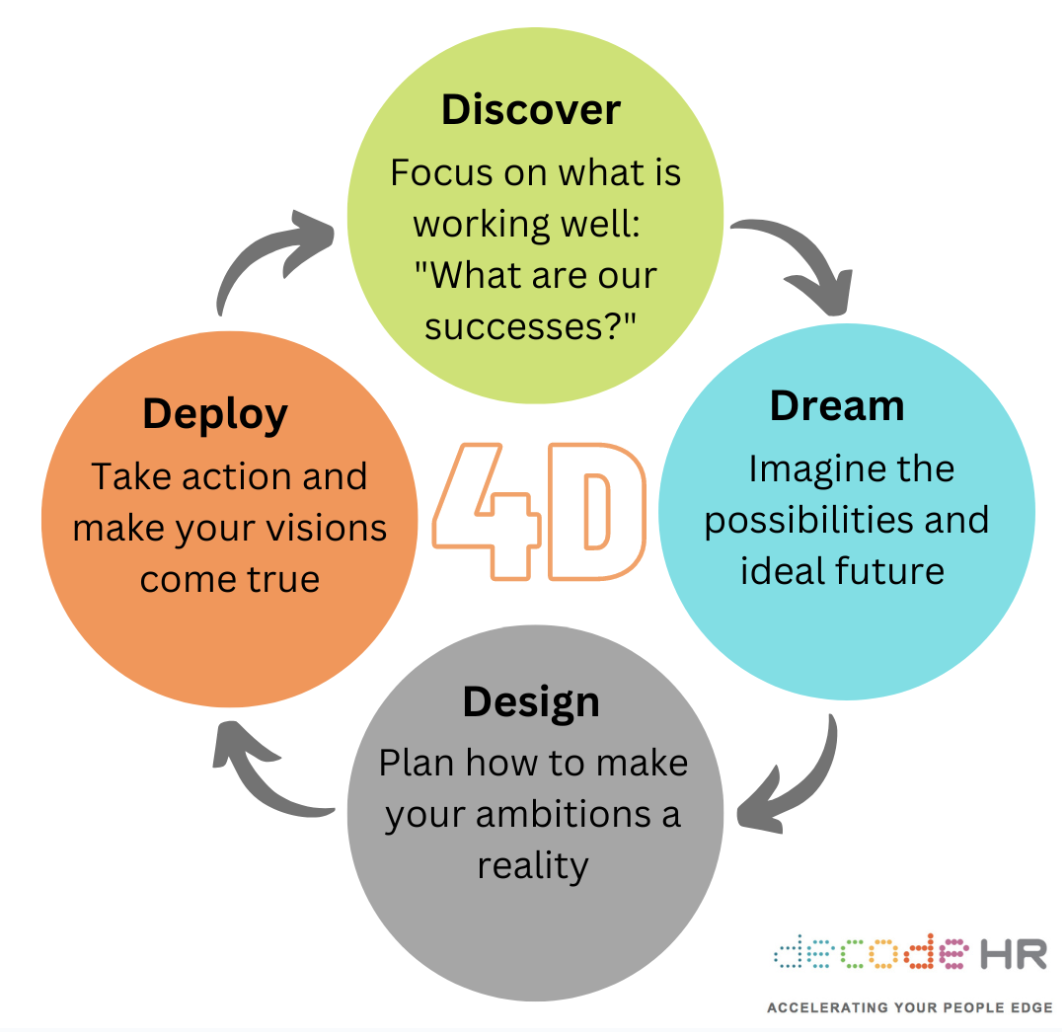Digital Transformation Is a Team Sport – Coach Your Team to Score Goals
Reading time: 5 mins
Various coaching interventions can help navigate change positively, keep a competitive edge, and stimulate professional growth.
Photo: Canva
In a recent McKinsey Global Survey, most companies find that their business models are becoming obsolete and that they need to build new digital businesses to stay economically viable. According to World Economic Forum, 50% of employees globally will need re-skilling by 2025.
Companies realise that command-and-control leadership is no longer effective in times of rapid, disruptive change and that managers can't be expected to have all the solutions. As a result, many businesses are shifting to a coaching model where managers promote problem-solving and foster employees' growth by posing questions, providing support, and offering guidance rather than issuing directives or passing judgment [1].
So how can we use coaching to stay nimble and competitive?
First of all, coaching in the context of this article refers to a manager's ability to ask the right questions, support employees, and facilitate professional and personal growth to foster a learning organisation [2]. Active listening is crucial. It refers to giving full attention to what the coachee is saying as well as feeling. Listen to understand instead of respond.
Why Coaching
Contemporary organisations providing services are knowledge-intensive. Knowledge is their key asset. Organisations gain an edge over their competitors by delivering innovative solutions. That requires them to keep their knowledge base up to date. The more central knowledge is to its core, the more critical it is to foster a learning organisation. Having a growth mindset is, therefore, crucial. Through coaching, managers can stimulate this growth mindset and, at the same time, generate insights with employees, creating an attractive workplace for talents who are likely to be quicker to claim a responsible role, want control and are looking for a coach instead of a boss [3].
Photo: Canva
Coaching styles
Consider the following coaching styles: directive and nondirective. Managers with a directive coaching style tell coachees about solutions to problems – they see it as mentoring. Managers with a nondirective style focus on listening and asking questions to facilitate emerging ideas. The sweet spot, however, lies in situational coaching, which involves balancing between directive and nondirective styles based on specific circumstances [4].
This balance is crucial during digital transformation, as skills gaps will remain the most significant challenge for companies undergoing digital transformation [5], which requires people to gain new perspectives and digital literacy.
Effecting cultural transformation
Digital transformation requires cultural change. Leaders need to practise active listening and effective questioning to maximise employees’ potential. Making coaching an organisational capability by outlining the benefits for the company and individuals ensures that leaders embrace and model it. This helps to develop coaching skills throughout the ranks and removes obstacles to change [6]. These actions will then lead to a cultural transformation.
Developing a coaching culture
Below, we introduce various coaching-related interventions you can embark on to navigate change and create a company where talents are eager to work:
Solution-based coaching
Appreciative Inquiry
The Appreciative Inquiry (AI) process is built on the idea that we have the power to grow and develop the things to which we pay attention. AI is a four-phase process that begins with what is already working and builds on that to create the future we want [7]. The first step is to define the inquiry by establishing the scope and goals in a positive light. The visual below shows the four phases.
Appreciative Inquiry 4D cycle
“We change best when we are strongest and most positive, not when we feel the weakest, most negative, or helpless.”
Why AI
AI discussions are worthwhile because they energise individuals, solidify bonds, free innovation, and advance organisations. They can transform a depressing work environment into one that fosters creativity and well-being. Even in the face of unanticipated and bad situations, they can open doors to possibilities and invention.
Two simple appreciative practices
1. Positive framing
Focus attention and action on where we want to go or what more we want. It is about intentionally shaping a conversation that invites engagement and produces positive outcomes. For example, when revenues decline, instead of framing it as ‘we are losing money, if this keeps up, we will have to curtail spending’, frame it as ‘We should improve our services to gain a competitive edge and grow our revenue.
2. Generative questions
Asking a generative question starts with curiosity and an open mind. The questions surface new information and knowledge while stimulating creativity and innovation.
Award-winning author and consultant Gervase Bushe claims that the likelihood of achieving generative results increases when practitioners pose generative questions that exhibit at least the following traits [8]:
1. They are surprising.
2. They touch people’s hearts and spirits.
3. They focus on stories and experiences that help to build relationships.
4. They force us to look at reality a little differently, either because of how they ask us to think or because of whom we are listening to.
Photo: Canva
Performance Coaching
This form of coaching aims to eliminate the discrepancy between actual and desired performance. The coach helps clients focus on fine-tuning their skills and actions, clarifying their goals, and developing action steps to help achieve short-term goals or long-term strategic plans.
Year-end evaluations and rankings at the law firm Allen & Overy had become unproductive. The company acknowledged that these exercises were a barrier to the open and encouraging interactions that employees needed to progress their professional development and to achieve the organisation's objective of becoming a learning organisation. As a result, it did away with the performance evaluation system and now holds coaching sessions with employees to provide them with real-time feedback on their work. Employees claim that these discussions open up a fresh and valuable dialogue on their professional development [9].
Solution-based coaching
In solution-based coaching, the coach focuses on helping coachees find solutions to their problems. The coach does not give advice or tell the coachee what to do. Instead, the coach helps them explore their options and find the best solution. This type of coaching is often used in business coaching, as it can help employees find solutions to work-related problems.
Clients who received solution-focused coaching felt more positive and motivated to solve their problems compared to those who received problem-focused coaching [10]
Photo: Canva
Elements of solution-based coaching:
Working in a solution-focused way means that the coach and the coachee cooperate in searching for unique solutions which are relevant and customised to the coachee.
The coach facilitates but does not interfere with or take over the coachee's unique solution-building processes.
Solution-focused coaches encourage coachees to switch the focus of their attention from 'seeing' mainly problems to noticing when and how constructive and positive events happen.
The more people become solution sensitive, the more they become aware of available solutions.
“At its best, solution-focused coaching enables people to access and use the wealth of experience, skills, expertise and intuition we all have. It allows people to find individual and creative solutions to the situation they find themselves in, both at work and in their personal lives. ”
Diverse approaches, contexts and outcomes make coaching a critical skill for organisations to adopt. Indeed, when both managers and their teams adopt a coaching mindset and work towards achieving desired goals, it benefits the organisation as a whole [11]. Embedding coaching as part of the organisational DNA provides a strong foundation for big wins in the digital transformation game.










